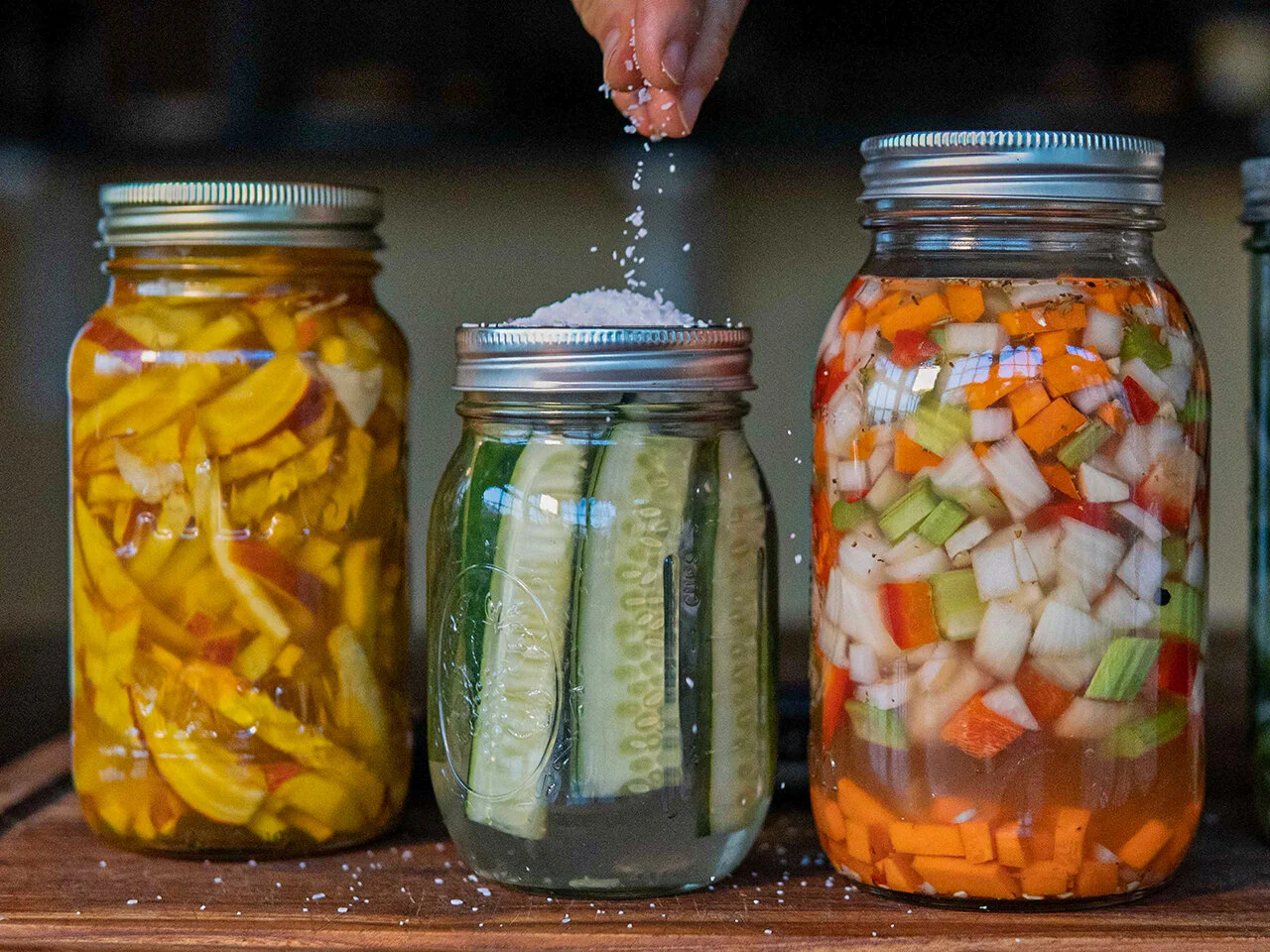Noma Guide to Lacto Fermented Pickles
Sourness, umami, crunchiness. Lacto fermented pickles are the perfect accouterments to any dish. Learn how to pickle any vegetable (or fruit) with this brining method from Noma. It’s the same basic idea behind lacto-fermenting without a brine, with some minor changes.
Ingredients
Vegetable (or fruit) of your choice
Water to cover vegetables
2% salt of water + vegetable weight
Basic Lacto Fermentation in a brine (Pickling) Process:
Place empty crock or jar on a scale and tare or zero the scale.
Fit the vegetables snugly into the vessel
If you want to add any additional spices (bay leaves, mustard seeds, peppercorns, etc.). I'm keeping mine plain here for the basic version, but will show you some experiments I tried, after this one.
Add enough water to submerge the vegetables and note the weight down.
Calculate 2% of that weight, and weigh out that much salt into a bowl. (MAKE SURE you calculate and weigh exactly for safety, you can go above 2% but do not go below.)
Pour the water out from the vessel and mix the salt until it’s dissolves.
Pour the saline solution back over the vegetables.
Cover with the cap, and lightly screw on the cap, allowing nothing to enter, but loose enough that gas produced from fermentation can still escape.
Now it is time to wait. Normally, just leave them at room temperature, though Noma does their ferments at 82 F. You can ferment in the fridge, though it will ferment at a much slower pace.
If fermenting at room temperature, you want to start checking on the pickles after 2-3 days and monitor the progress for sourness.
Once the pickles have reached the desired sourness. Move to the fridge, screw the cap tight, and it will store in the brine for several months for you to enjoy.
Questions about lacto fermentation safety
How do I clean my lacto fermentation vessel?
Run it through a cycle of your dishwasher. Or if that's not possible, you can disinfect and clean with some vinegar and hot water
Do I need to use gloves to handle?
For lacto fermentation, no! Obviously, make sure they are clean of visible dirt and grime, but since LAB exists naturally on our skin, there is no need to use gloves as that may actually help the LAB population thrive.
Is that mold?
If in doubt, throw it out. Mold is generally fuzzy in appearance and will show up as spots in a variety of colors. If you see mold, just throw it out, the risk isn't worth it. That being said there is something called kahm yeast which will be a solid layer across. This can be skimmed off and you can continue fermenting. Check out this article if you think you may have kahm yeast.
What about botulism?
Clostridium botulinum (the bacteria that causes botulism) that thrives in the absence of oxygen. Sounds similar to LAB right? Here is a huge difference though. Clostridium botulinum struggles in the presence of salt or acid, which both exist in our lacto fermentation through salt and the LAB turning sugar to acetic acid.
According to the USDA, Clostridium botulinum cannot grow in ph lower than 4.6, so if you want to be extra careful, you can use a ph meter to test your solution.
Also, botulism is relatively rare. In the 2017 CDC national botulism surveillance, there were 182 confirmed lab cases with just 19 or 10% being foodborne.
Sources:
Noma guide to fermentation (Pg 62)
